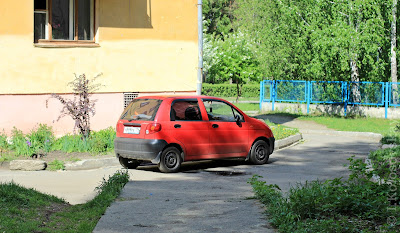I have gathered the knowledge about composition (in art and photography) after reading a lot of articles and several books. I noticed that there’s no accepted opinion on this subject. This post is just my opinion, so please don't take my word as final.
The term “composition” applies not only to visual arts, but to music, dance and literature.
Composition in the visual arts (including painting and photography) is the placement or arrangement of visual elements or ingredients in a work of art, as distinct from the subject of a work. It can also be thought of as the organization of the elements of art according to the principles of art.
The term composition means 'putting together,' and can apply to any work of art, from music to writing and photography, that is arranged or put together using conscious thought. In the visual arts, composition is often used interchangeably with various terms such as design, form, visual ordering, or formal structure, depending on the context.
“Photography is one of the most universal languages around, and you do not have to say a word.” Anonymous
The language of art, including photography is a visual language. The elements of composition can be thought as the words, the rules (or principles) of composition can be thought as sentences. Photographers use composition (elements of composition + rules of composition) to express their ideas.
Basic elements of composition (almost all authors include these elements as the elements of composition):
1) line,
2) texture,
3) color,
4) space,
5) depth.
The 2nd group of elements of composition (many authors include these elements as the elements of composition):
6) shape,
7) form,
8) pattern.
Line: a visual path on a surface that leads the eye of the viewer to another point in the image (or sometimes out of the image).
A line can be vertical, horizontal, diagonal, straight, curved or zigzag.
Lines suggest direction and imply motion.
Horizontal lines imply calm, space and tranquility. Horizontal lines are very common in landscape photography. Vertical lines can give the impression of power, height and strength. Vertical lines can be formed by different objects such as trees and buildings. Diagonal lines can convey a sense of action in the photo. Diagonal lines can be formed by a fence, river, a line of trees, etc.
Curved lines imply quiet and calm feelings.
Line is a very important element of composition, because there’s no shape without line; there’s no form without shape and there are no texture and pattern without form.
Texture: the surface quality of an object (soft, smooth, rough, sharp) or the illusion of texture in two-dimensional art.
Light can help to capture texture. Texture adds interest to the image because sense of sight and sense of touch is involved.
Color: hues with their tints and shades, and their relationship to each other.
Color defines lines, shapes, forms, and space.
A strong color on the main subject can add extra emphasis, but muted colors can be very interesting too. Different colors can evoke different emotions.
Space: the area between and around objects and the illusion of three dimensions in two-dimensional art. Positive space is the area the subject takes up. Negative space is the area around, under, through and between objects in the image. For the sense of balance both positive and negative space need to be used.
Depth: an element of composition that gives a photo a 3 dimensional feeling.
It’s a perceived distance from the viewer, separated in foreground, background, and (optionally) middle ground.
Shape: a 2 dimensional representation of the object.
Shapes can be organic (natural) - irregular shapes found in nature, such as puddles, leaves, etc. or geometric (shapes with strong lines and angles such as circles, triangles, and squares).
Form: is basically a 3 dimensional shape with height, width and depth, such as spheres, balls, boxes, pyramids.
Pattern: a repetition of textures and shapes.
Patterns create a sense of harmony and rhythm. You can emphasize the pattern, or you can break it.
Thank you for reading! Feel free to share and to comment.
Stay tuned!













No comments:
Post a Comment